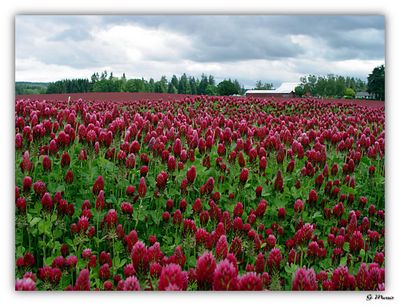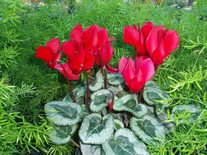There’s a peaceful quality to this time of year. Mother Nature is winding down for the season turning deciduous trees ablaze with fall color. Cool season pansies and violas turn their little faces to catch the sun. It’s time to put the garden to bed for a greener spring next year.
Here are some suggestions, but promise you won’t try to do everything on one weekend. it’ll just seem like work. Gardening should be somethin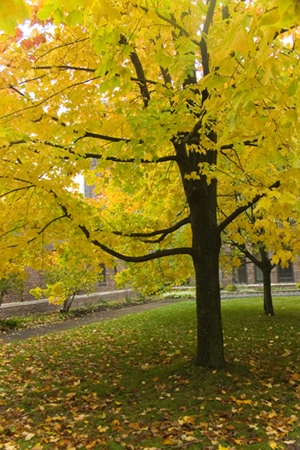 g you enjoy.
g you enjoy.
- Build up your soil by layering the vegetable beds with 2" of leaves newly fallen from your trees. Soil building worms and organisms will start their work right away. In the spring, dig what’s left into the soil. If you want the leaves to break down faster, run over them with a lawn mower, then rake them up for mulch.
- Prevent erosion of your precious soil by mulching with straw or bark. Mulch used around perennials, shrubs and trees will help moisture percolate into the soil instead of running off into storm drains or creeks along with fertilizers. Mulch also keeps the soil from becoming compacted by winter rains. If you don’t have enough leaves to use as mulch try layering newspapers and cardboard and cover with straw. 3-4" of mulch around the base of trees and large shrubs will hold weeds down, too. Be sure to keep mulch a couple of inches away from the base of your plants so trapped moisture doesn’t rot the trunk.
- Chop down leftover vegetable plants and spent annuals flowers and layer on the vegetable bed under cardboard to decompose. Don’t do this with diseases plants such as squash plants with powdery mildew. These can be put in the curbside yard waste can. Hot commercial composting systems can kill disease spores.
- Clean empty pots and store them upside down in a dry location. That way you’ll keep any soil diseases from being passed on to next year’s plants.
- Store any excess leaves to use next summer if you have a lot of deciduous trees. They’re like gold. They make great bedding for a worm bin and next summer you can use them in the compost pile when you have an abundance of nitrogen rich green material but little carbon-based brown stuff to mix with it.
- Leave a little debris for wildlife so beneficial ground beetles have a place to live and birds can snack on seeds left on shriveled flowers. Coneflowers, ornamental grasses and crocosmia all attract birds to their seed heads through the winter.
The bottom line is to do those fall clean-up jobs as you have the time and energy. Cleaning up in increments leaves height and interest in the garden and feeds the birds, too.
What you should do first, though, is to bring indoors houseplants that spent the summer out on the patio. Also bring in any plants too tender to survive the winter outside. Be sure to inspect them for insect pests and wash them off. Sub-topical plants like tree ferns and bananas benefit from extra mulch to help them survive the worst of the winter weather.
It’s not too late to reseed thin spots on your lawn or apply a fall fertilizer to an existing one and if you have citrus trees, rhododendrons, azaleas or camellias they’ll benefit from an application of Citrus use it for flower bud development and fruit sweetness. Rhodies, azaleas, and camellias need it when flower buds begin to form. It also improves flowering and root development of any plant and helps plants resist diseases and cold weather damage.

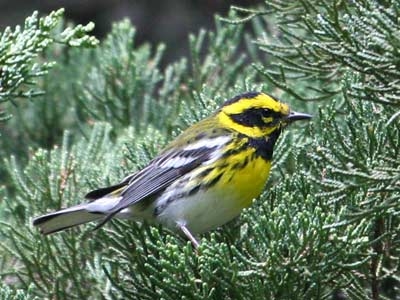 e many resident birds that help me in the garden as they go about their business of nesting and raising their young. Ladybugs and other beneficial insects also do their part but it’s the songbirds I depend on to really get in there and do a clean sweep. As if that’s not enough I get to hear them sing and call to each other and enjoy their bright plumage as they flit through the trees.
e many resident birds that help me in the garden as they go about their business of nesting and raising their young. Ladybugs and other beneficial insects also do their part but it’s the songbirds I depend on to really get in there and do a clean sweep. As if that’s not enough I get to hear them sing and call to each other and enjoy their bright plumage as they flit through the trees. 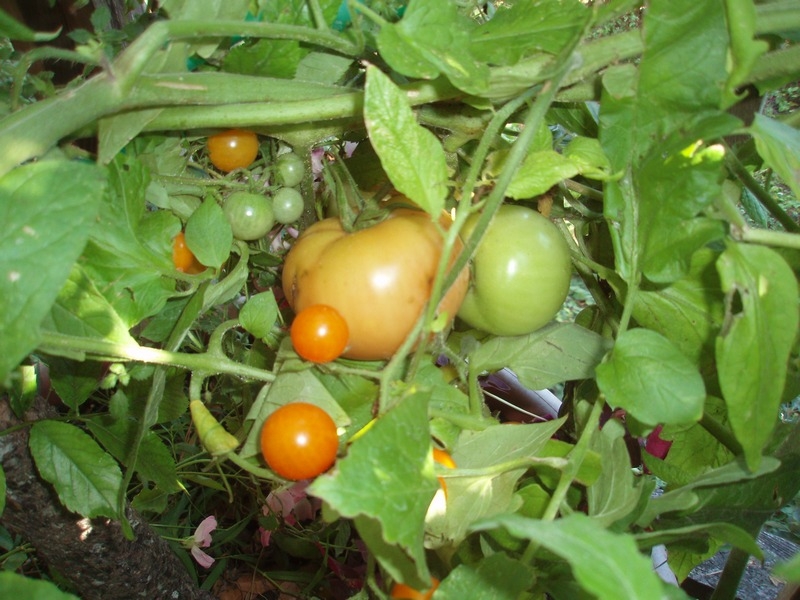 only from strong healthy vines, and pick only those fruits free of disease, insect or mechanical damage. Remove stems to prevent them from puncturing each other and if dirty, gently wash and allow the fruit to air dry.
only from strong healthy vines, and pick only those fruits free of disease, insect or mechanical damage. Remove stems to prevent them from puncturing each other and if dirty, gently wash and allow the fruit to air dry. 